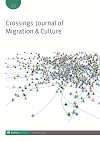
Full text loading...

Indigeneity’s voluntary migrations and involuntary displacements amply testify to its mobility historically. And yet, settler-colonialism resists recognizing this fact – even suggesting that indigeneity loses its status as Indigenous by spatial and temporal relocation. This article contrasts settler-colonial and experiential frameworks of indigeneity and immigrancy to further add to efforts to more securely ground Indigenous peoples’ personhood and livelihoods in the world. Two main findings from this analysis include (1) indigeneity’s ‘inextricable’, ‘timeless’ and ‘immutable’ linkage of place, past and an unchanging sense of identity diametrically opposite to immigrancy’s ‘displacement’, ‘evolution’ and ‘mutability’ of ethnic identity as it moves ideally from immigrant toward citizen and (2) settler-colonialism’s ‘refusal to humanize’ people who never migrated (the enslaved and the Indigenous) compared to its virtually boundless faith in the possible ‘humanization’ of all immigrancy (the ‘melting pot’). These findings suggest that settler-colonialism views indigeneity as an unassimilable otherness – thus disclosing the limit and poor prospects of human rights discourses for sufficiently recognizing indigeneity outside the times and spaces settler-colonialism allots to it. Nevertheless, they also suggest fruitful changes of emphasis and existing models to learn from for better securing Indigenous personhood and its life-ways here and now.

Article metrics loading...

Full text loading...
References


Publication Date:
https://doi.org/10.1386/cjmc_00085_1 Published content will be available immediately after check-out or when it is released in case of a pre-order. Please make sure to be logged in to see all available purchase options.